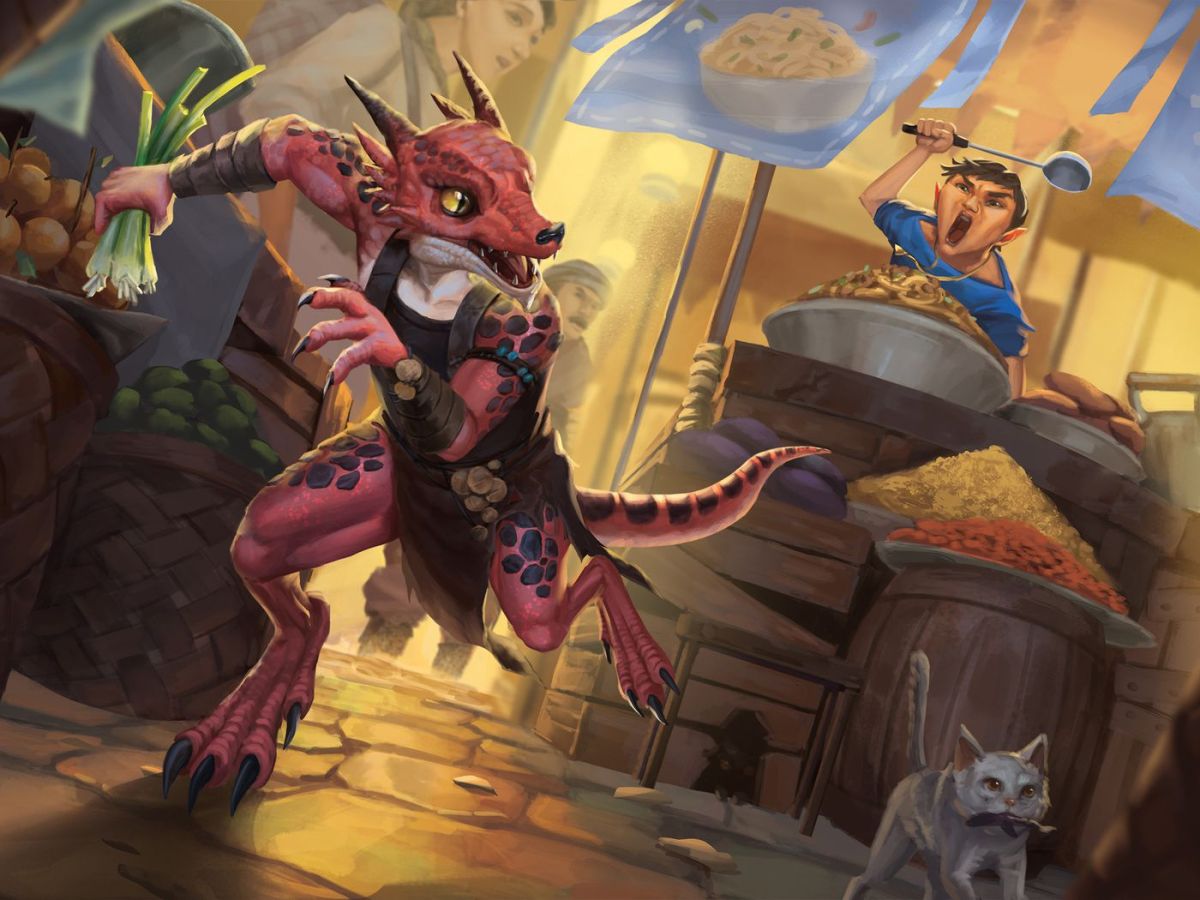Even for long-time Dungeons & Dragons (D&D) fans, Journeys Through the Radiant Citadel (Journeys) is an unusual book.
Unlike most Wizards of the Coast (WotC) D&D sourcebooks, Journeys doesn’t detail an entire setting, or a single coherent adventure. Instead, it presents 13 short adventures for parties ranging from 1st to 14th level, each set in different worlds that are loosely linked together by the titular Radiant Citadel. This unconventional format means that the adventures detailed in Journeys can be run on their own, or be easily slotted into an ongoing campaign, and the book’s authors have helpfully included short blurbs with each adventure suggesting how they might be worked into popular campaign settings, like with the Forgotten Realms or Eberron.

It is worth mentioning that Journeys is the first WotC book entirely written by people of colour, and that its setting draws inspiration from non-Western cultures worldwide. While it is certainly commendable that WotC is trying to be more inclusive, this isn’t exactly something too ground-breaking in the wider D&D community, given that there already exist plenty of third-party settings and adventures written and illustrated by POCs and based on non-Western cultures – for example, the excellent Lorn Song of the Bachelor from Hydra Cooperative. Ultimately, the backgrounds of the book’s writing team and source material were non-factors in this review.
Like most WotC D&D sourcebooks, Journeys Through the Radiant Citadel is a joy to read. The adventures are written in clear, straightforward prose and helpfully organised with the use of headings, tables, bullets, block quotes and other standard presentation techniques. The art that accompanies the book is fantastic, with standouts being the vibrant colours used to depict a Mardi-Gras-like festival in “Wages of Vice”.
However, one negative point is that the book is presented more like a novel and less like a resource for DMs, in that certain crucial plot points for its various adventures are only revealed when narratively appropriate. While this makes for good first-time reading, one can imagine that it might get slightly irritating for DMs to constantly have to flip a few pages forward to be reminded of plot points like a character’s motivations or true identities, rather than having it all on the same page when the character is introduced. Journeys is also not playable as a standalone book, and DMs will need to refer to a copy of the Monster Manual for the stats of many enemies mentioned in Journeys. This is a common feature of WotC sourcebooks, but can still make for some annoying multi-tasking when running a campaign.

Otherwise, Journeys is fairly straightforward mechanics-wise, and it seems quite clear that its authors placed more emphasis on world-building and storytelling than coming up with new mechanics or game systems. Similarly, while the new monsters in Journeys are by no means poorly designed, none of them strike this reviewer as being particularly memorable from a mechanical standpoint – although a creative DM should be able to make the encounters memorable nevertheless based on the excellent flavour text and descriptions that Journeys provides.

One notable exception is the Market Games detailed in the 1st level adventure “Salted Legacy”, which provides players with an interesting renown mechanic as well as several unexpected ways for PCs with non-combat skills to shine. Salted Legacy is probably the single best adventure in Journeys, and highly recommend as a good Session One for a campaign, or as an introduction to D&D in general
Given their fairly unremarkable game mechanics, the quality of the adventures in Journeys depends very heavily on how compelling their plot and setting are. Thankfully, all the fourteen different settings (one for each adventure in the book, and the titular citadel itself) are very compelling even in the limited space the book is able to devote to them, and one can imagine many DMs expanding the brief sketches presented in Journeys into full-fledged worlds of their own. A personal favourite is the Radiant Citadel itself, which is reminiscent of a more optimistic version of Sigil from Planescape, and Godsbreath, a blighted land that can only be rejuvenated by the death of one of its patron gods.
Alas, it is a shame that Journeys Through the Radiant Citadel is not able to provide more information on the worlds it sketches, but it does hit enough key details to bring the worlds to life, and in a way, the blank space it leaves can be a boon for DMs trying to weave the various settings into homebrew worlds of their own design.
Unfortunately, the quality of the adventures’ plot varies greatly. A few, notably “Gold for Fools and Princes” and “Written in Blood”, are pretty much standard “go there, kill this” dungeon crawls, but others suffer a little from confusing NPC motivations or flat characterisation. Still, the majority of the plotlines in Journeys are excellent and include stand-out gems like an expedition into the decaying corpse of an elder god, and a detective mystery set amidst the dynastic politics of a China-inspired court.
Given the plethora of free or cheaply-priced D&D content available to modern gamers, books which charge a premium price should generally provide equally premium content, and Journeys falls a little short in this regard.

The nature of Journeys’ unconnected one-shots means that they cannot be played as a traditional, coherent campaign from levels 1 to 14 without significant adaptation from the DM (or a gaming group that enjoys campaigns without an overarching plot). Most DMs running narrative-focused campaigns will also probably only be able to incorporate a limited number of the book’s adventures into their campaign without completely derailing the main plot. This means that purchasers of the book will likely only be able to use half or less of its contents over the course of a campaign, which makes Journeys seem like a poor resource when compared to books like Curse of Strahd which can provide a party with content all the way from levels 1 to 10.
Similarly, Journeys provides limited value as a world-building aid. Books like Eberron give a DM everything they need “out of the box” to run a full campaign, while each of the settings in Journeys (while serving as good jumping-boards) requires significant fleshing-out before they can play host to a campaign.
However, if you are a DM who finds yourself constantly being asked to run one-shots for friends, Journeys Through the Radiant Citadel might be a worthwhile resource as 13 adventures for US$30 is a pretty good deal. Then again, given the uneven quality of Journeys’ adventures, one might be better off simply purchasing several higher-quality one-shots or using free resources available on the web.
GEEK REVIEW SCORE
Summary
Journeys Through the Radiant Citadel is a good resource for short, standalone adventures that can fit into any campaign, or for more experienced DMs looking for inspiration in building homebrew worlds. However, its content runs a little thin given the book’s price point and the plethora of competitors in the market, and price-conscious DMs may be better off looking elsewhere or waiting for a sale.
Overall
6.4/10-
Gameplay - 6/10
6/10
-
Story - 7/10
7/10
-
Presentation - 7/10
7/10
-
Value - 6/10
6/10
-
Geek Satisfaction - 6/10
6/10













